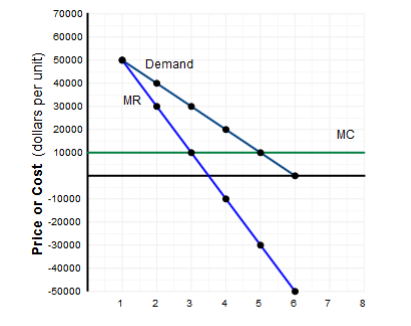Introduction
The shape and structure of most modern markets are shaped by market power and competition. Market power stands for the strength of a company or a product in a particular market. All companies seek to increase their market power, which results in competition. In economics, the four Ps of the marketing mix determines competition: Price, Product, Promotion, and Place (Rittenberg 436). The presence of many competitors causes lower prices and greater selection for the customer. However, these rules are largely not applicable to a market controlled by a single company, or a monopolist.
A monopoly is a company that produces unique goods, or which is protected from competition by natural, legal, or financial barriers, which prevent other companies from entering the market (Rittenberg 436). Although the law in most countries prohibits the existence of monopolies, all companies strive to approach the state of monopoly as much as it is legally possible. In most cases, it results in the form of oligopoly, when 2-3 major companies competing with one another to control the market. In a monopolistic market, the output is determined by price and marginal revenue. The purpose of this paper is to demonstrate a single-price monopoly’s output and price decisions by resolving a fictional case involving the production and subsequent selling process of a GT7 sports car.
Case Study
A single-price monopoly company produces GT7 sports cars, which are unmatched by anyone else in the industry. Five buyers are willing to purchase these cars. Buyer A is willing to pay 50,000 dollars or less. Buyer B is willing to pay 40,000 dollars or less. Buyer C is willing to pay 30,000 dollars or less. Buyer D is willing to pay 20,000 dollars or less. Finally, Buyer E is not interested in the product above the 10,000-dollar price range. The cost of producing the cars includes $50 000 of fixed costs and a constant marginal cost of $10 000. The task includes the determination of a profit-maximization rate of output and price for the monopolist.
Solution

Fig. 1 represents marginal revenue, demand, and marginal costs graph. Since marginal costs for the production of the GT7 sports car is constant, it is represented as a straight line. The demand for the product increases as the price drops. Marginal revenue decreases along with the price. The profit-maximization output is where the marginal revenue line crosses the marginal costs line. Total profits are calculated using the following formula (Monopoly 7):
Total Profit = Total Revenues – Total Costs = Total Revenues – (Total Variable Costs + Total Fixed Costs). If we apply the information from our case study into the formula, the results would be as follows:
TP = (30000 * 3) – (10000 * 3 + 50000) = 10,000 dollars.
Discussion
As shown in the graph presented above, the number of customers increases in correlation with decreasing prices. Customers at the high end of the paying spectrum (Customers A and B) would still be willing to purchase the product at a lower price. At the same time, decreasing prices would enable other customers (C, D, and E) to purchase the product.
Marginal revenue represents the changes in revenue with increasing production and decreasing costs. It is calculated using a formula of MR = TR2 – TR1 (“The Monopoly Model”). For example, MR1 on the graph presented above is 50000, which stands for one car sold at 50000 dollars. MR2, for two cars sold at 40000 dollars each, would be 40000 * 2 – 50000 = 30000 dollars. At each level of output, marginal revenue is less than the price. This is one of the defining features of a single-price monopoly (“The Monopoly Model”).
The point of profit-maximization output is to find a spot where the price and quantity of products sold yield maximum total profit. In this scenario, the profit-maximizing output is three cars. If the company were to produce four cars and sell them at the price of 20000 dollars each, the formula would look like this:
TP = (20000 * 4) – (10000 * 4 + 50000) = 80000 – 90000 = -10000 dollars. As it is possible to see, selling too much would result in a loss of profit for the company.
Conclusion
Single-price monopolies differ greatly from other types of markets due to the relationship between marginal profits and prices. To increase sales, single-price monopolies are forced to lower prices on all of its products, as illustrated in the downwards MR graph. The extra revenue generated by these measures is offset by the decreases in prices. As a result, the net increase in the company’s revenue is less than the price of the last unit sold. A monopolist benefits from the elasticity of prices, which means that a fall in price brings an increase in total revenue. The revenue increases so long the profits from selling more products outweigh the losses per unit generated from a decrease in prices. A monopolistic market remains a theoretical model in the modern economy, as, in practice, single-price monopolies are extremely rare.
Works Cited
Monopoly. Web.
“The Monopoly Model.” University of Minnesota Libraries, Web.
Rittenberg, Libby. Principles of Microeconomics. Flat World Knowledge, 2009.